Accepted Scientific Name: Astrophytum coahuilense (H.Moeller) K.Kayser
Kakteen-Freunde i. 59.(1932); cf. Gray Herb. Card Cat., Issue 143.
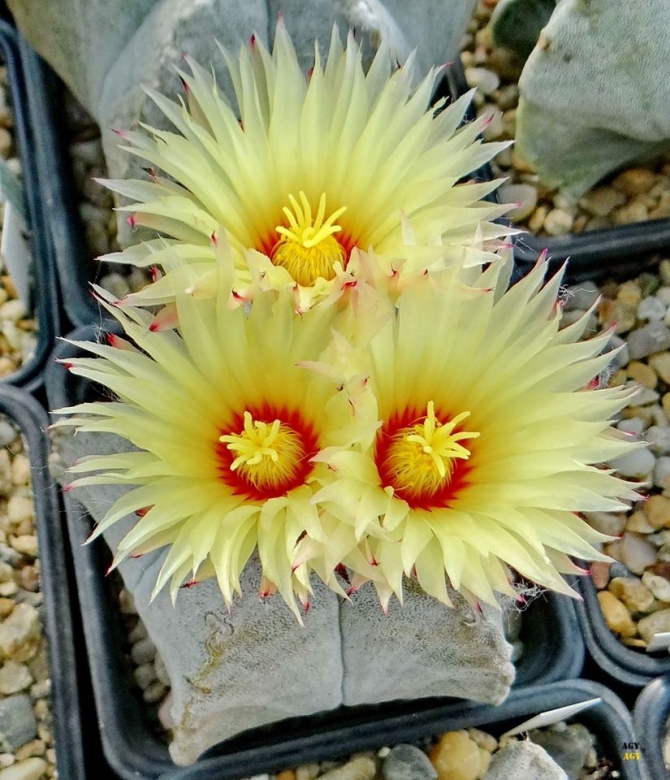
Astrophytum myriostigma var. coahuilense (Astrophytum coahuilense) Photo by: Agócs György
Field number: SB 1474 (Collector Steven Brack) Locality: Lerdo, Durango, Mexico.
Origin and Habitat: Astrophytum coahuilenseSN|1850]]SN|1850]] is narrowly distributed in the south-westernpart of the state of Coahuila and Durante (Ciudad Lerdo, Sierra Baicuco, western Sierra Parras and southern of this line up to the Sierra of El Numero), Mexico. Extent of occurrence less than 6,000 km². It is known from three locations that are severely fragmented.
Altitude range: 1100-1600 metres above sea level.
Habitat: They inhabit preferentially sunny south and east slopes on lime formations, rarely grow in north or west position between white grey rock in a loose to thick vegetation, which mainly consists of a dry bush community (xerophytic shrubland) together other cactus species such as: Ariocarpus lloydiiSN|2120]]SN|2120]] and Thelocactus wagnerianusSN|15796]]SN|15796]]. The soil, consist mainly of lime gravel and sand with isolated humus feedthroughs. There is continuing decline in the quality of the habitat due to overgrazing. In addition, the number of plants is declining due to illegal collection. Furthermore, it does not occur in any protected area and is listed as Vulnerable.
Synonyms:
See all synonyms of Astrophytum coahuilense
back
Accepted name in llifle Database:Astrophytum coahuilense (H.Moeller) K.KayserKakteen-Freunde i. 59.(1932); cf. Gray Herb. Card Cat., Issue 143.Synonymy: 8
Cultivars
(4):
back
Common Names include:
ENGLISH: Bishop's Cap, Bishop's Miter, Bishop's hat, Miter Cactus, Monk's Hood
CHINESE (中文): 鸾凤玉(四棱), 鸾凤玉(龙凤), 碧琉璃(红叶), 优选碧方玉, 白云恩塚鸾凤玉, 鸾凤玉(变锦), 红叶锦(黄), 红叶锦}{碧琉璃鸾凤玉(多头), 恩塚丸棱四角鸾凤玉}{鸾凤玉(多头), 恩塚丸棱鸾凤玉, 恩塚}{恩塚(杂交变种), 龟甲鸾凤玉(稍红}, 三角鸾凤玉
ITALIAN (Italiano): Cappello del Prete, Cappello del Vecovo, Berretta da Prete
JAPANESE (日本語): Hakuran
SPANISH (Español): Bonete de Obispo, Mitra
Description: Astrophytum coahuilenseSN|3564]]SN|1850]] with five ribs, has a surprising similarity to Astrophytum myriostigmaSN|3564]]SN|1845]]. However, it is different in all characteristics regarding flower, fruit, seed and embryo which looks like in all details to Astrophytum capricorneSN|1845]]SN|3564]]. The differences into flower, fruit, seed and embryo and flecks are constant and permit in any case to distinguish A. coahuilense without problems from A. myriostigma.
Nude plants as in the case of A. myriostigma are unknown.
It looks like the bishop's cap (A. myriostigma), but softer, more grey flecks that cover the plant even more than with the myriostigma. The flowers are yellow with a characteristic red throat, although can appear pure red or very seldom pure yellow. In the fruit which is red till olive-green coloured and basal opening are up to 200 seeds, similar as in the case of Astrophytum capricorneSN|1850]]SN|3564]]. This plant is more related to the Asterias/capricorne group than the myriostigma.
A. coahuilense and A. myriostigma when cross-pollinated are fruitless: they are (usually) sterile by each other.
Subspecies, varieties, forms and cultivars of plants belonging to the Astrophytum coahuilense group
Bibliography: Major references and further lectures
1) Edward Anderson “The Cactus family” Timber Press, Incorporated, 2001
3) James Cullen, Sabina G. Knees, H. Suzanne Cubey "The European Garden Flora Flowering Plants: A Manual for the Identification of Plants Cultivated in Europe, Both Out-of-Doors and Under Glass" Cambridge University Press, 11/Aug/2011
4) David R Hunt; Nigel P Taylor; Graham Charles; International Cactaceae Systematics Group. "The New Cactus Lexicon" dh books, 2006
5) N. L. Britton, J. N. Rose: “The Cactaceae. Descriptions and Illustrations of Plants of the Cactus Family.” Volume III, The Carnegie Institution of Washington, Washington 1922
6) Fitz Maurice, B, Sotomayor, M., Fitz Maurice, W.A., Hernández, H.M. & Smith, M. 2013. Astrophytum coahuilense. The IUCN Red List of Threatened Species. Version 2014.2. <www.iucnredlist.org>. Downloaded on 01 November 2014.
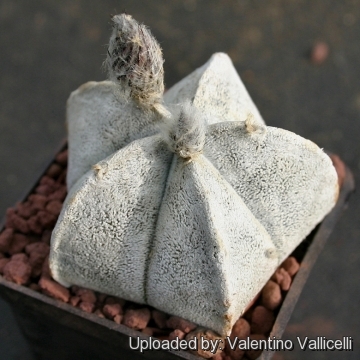 Astrophytum myriostigma var. coahuilense (Astrophytum coahuilense) Photo by: Valentino Vallicelli
Astrophytum myriostigma var. coahuilense (Astrophytum coahuilense) Photo by: Valentino Vallicelli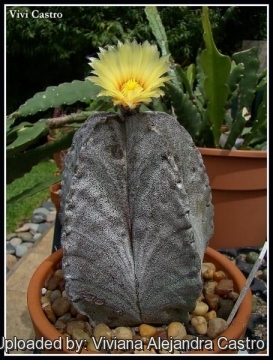 Astrophytum myriostigma var. coahuilense (Astrophytum coahuilense) Photo by: Viviana Alejandra Castro
Astrophytum myriostigma var. coahuilense (Astrophytum coahuilense) Photo by: Viviana Alejandra Castro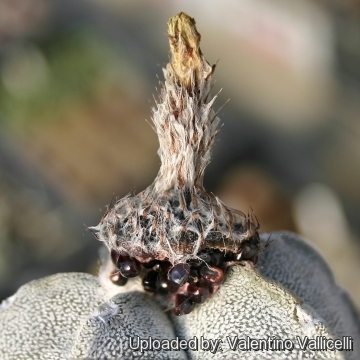 Astrophytum myriostigma var. coahuilense (Astrophytum coahuilense) Photo by: Valentino Vallicelli
Astrophytum myriostigma var. coahuilense (Astrophytum coahuilense) Photo by: Valentino Vallicelli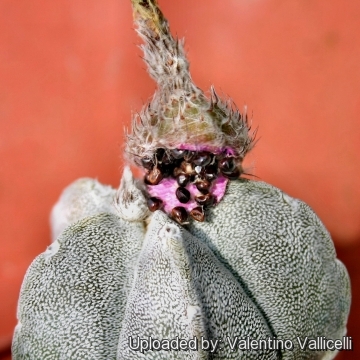 The fruit of A. coahuilense is pinkish and opens basally, it is very different from the fruit of Astrophytum myriostigma. (Astrophytum coahuilense) Photo by: Valentino Vallicelli
The fruit of A. coahuilense is pinkish and opens basally, it is very different from the fruit of Astrophytum myriostigma. (Astrophytum coahuilense) Photo by: Valentino Vallicelli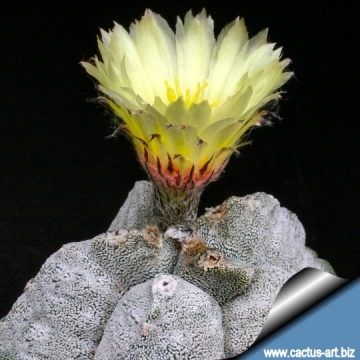 Astrophytum myriostigma var. coahuilense (Astrophytum coahuilense) Photo by: Cactus Art
Astrophytum myriostigma var. coahuilense (Astrophytum coahuilense) Photo by: Cactus Art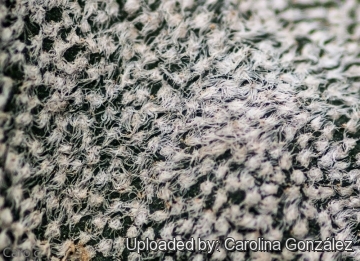 Astrophytum myriostigma var. coahuilense (Astrophytum coahuilense) Photo by: Carolina González
Astrophytum myriostigma var. coahuilense (Astrophytum coahuilense) Photo by: Carolina González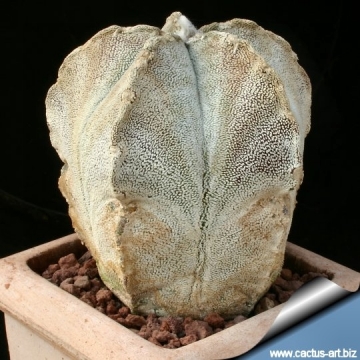 Astrophytum myriostigma var. coahuilense (Astrophytum coahuilense) Photo by: Cactus Art
Astrophytum myriostigma var. coahuilense (Astrophytum coahuilense) Photo by: Cactus Art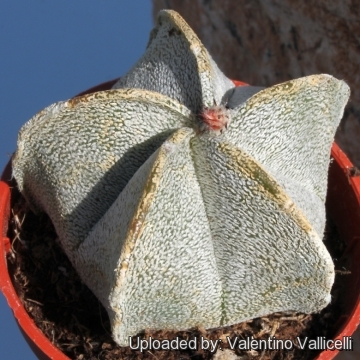 Astrophytum myriostigma var. coahuilense (Astrophytum coahuilense) Photo by: Valentino Vallicelli
Astrophytum myriostigma var. coahuilense (Astrophytum coahuilense) Photo by: Valentino VallicelliCultivation and Propagation: It is not too difficult in a greenhouse, although grows quite slowly. The plants need a loose well-drained mineral soil. They need a good amount of light. Watering can be done weekly during summertime, if the weather is sunny enough, with a little fertilizer added. Kept this way, plants will show a healthy, although slow growth. They are frost hardy to -4° (-10°) C
Propagation: By seeds, remembering that seedlings dislike strong light and dry conditions and need to be repotted frequently. Eventually, as they become mature, they attain a maximum size of 8-10 cm (20) cm. However, old plants become senile and have a tendency to succumb to disease and a weak root system. At this stage, as is well known, they die suddenly. So, after they reach 10 cm in diameter grow them slowly, and adopt a new repotting period, using intervals of every 2 - 3 years. Additionally grow them under drier conditions or with stronger sunlight. But plants are often grafted to accelerate growth as they would generally take at least a five years to reach maturity on their own, but the grafted plants are typical rather tall growing, compared with plants on their own roots that are usually more flat to the ground.
Your Photos
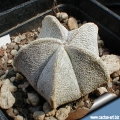
by Cactus Art




















